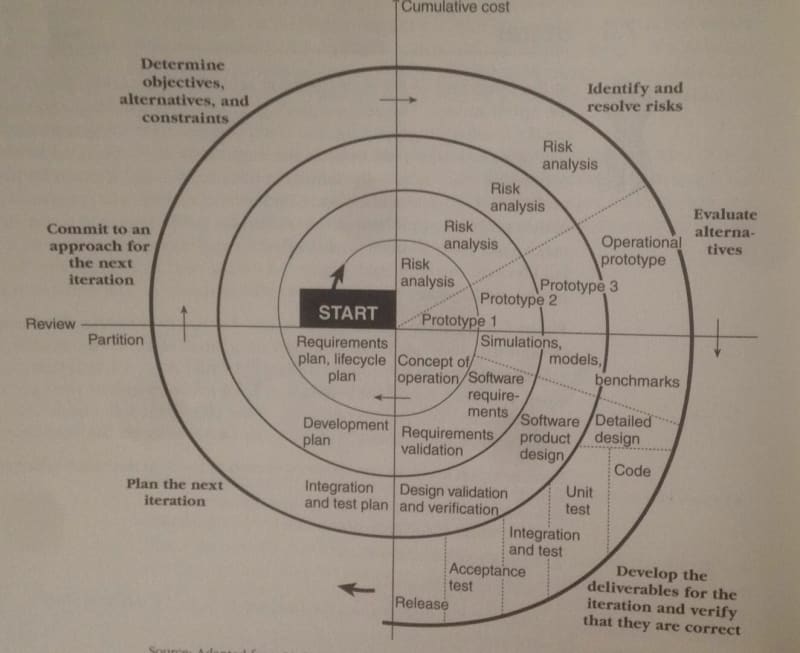The spiral model of development is a really good model that helps you develop faster. In the spiral model, you start small and expand the scope of the project in increments. You expand the scope only after you have reduced the risks for the next increment to an acceptable level. Today let us learn more about this model
The spiral model is a risk oriented model that breaks a software project up into mini projects. Each mini-project addresses one or more major risks until al the major risks have been addressed.
Risks refers to factors like
- Poorly understood requirements
- Poorly understood architecture
- Potential requirement problems
- Problems in underlying technology.
After all the risks have been addressed, the waterfall model terminates as a waterfall lifecycle would.
The spiral model is also called as the 'cinnamon roll' model.
the basic idea about the diagram is that you start on a small scale in the middle of the spine, explore the risks make a plan to handle the risks, and then commit to an approach for the next iteration.
Each iteration moves the project into a larger scale. You roll up one layer of the cinnamon roll, check to be sure that it's what's you wanted., and then you begin work for the next layer.
Each iteration involves the six steps below
- Determine objectives, alternatives, and constraints.
- identify and resolve risks
- Evaluate alternatives
- Plan the next iteration.
- Commit to an approach for the next iteration.
In the spiral model, the early decisions are the cheapest. You spend less developing the concept of operation than you do developing the requirements than you do developing the design, implementing the product, and testing it.
You can tailor the iterations of the model as per your requirements and the needs of the project.
Notes and images from Rapid Development: Taming Wild Software Schedules by Steve McConnell
To be continued...



Top comments (0)